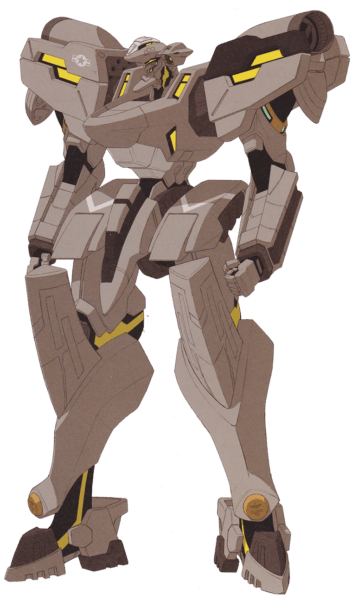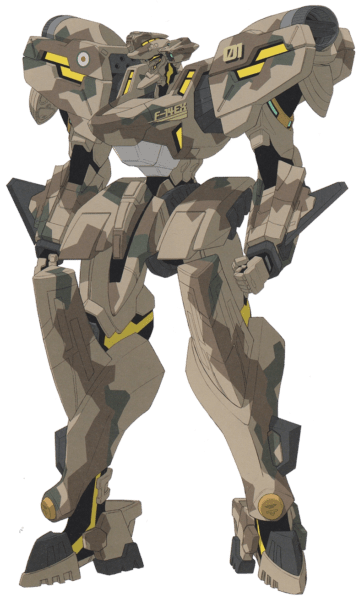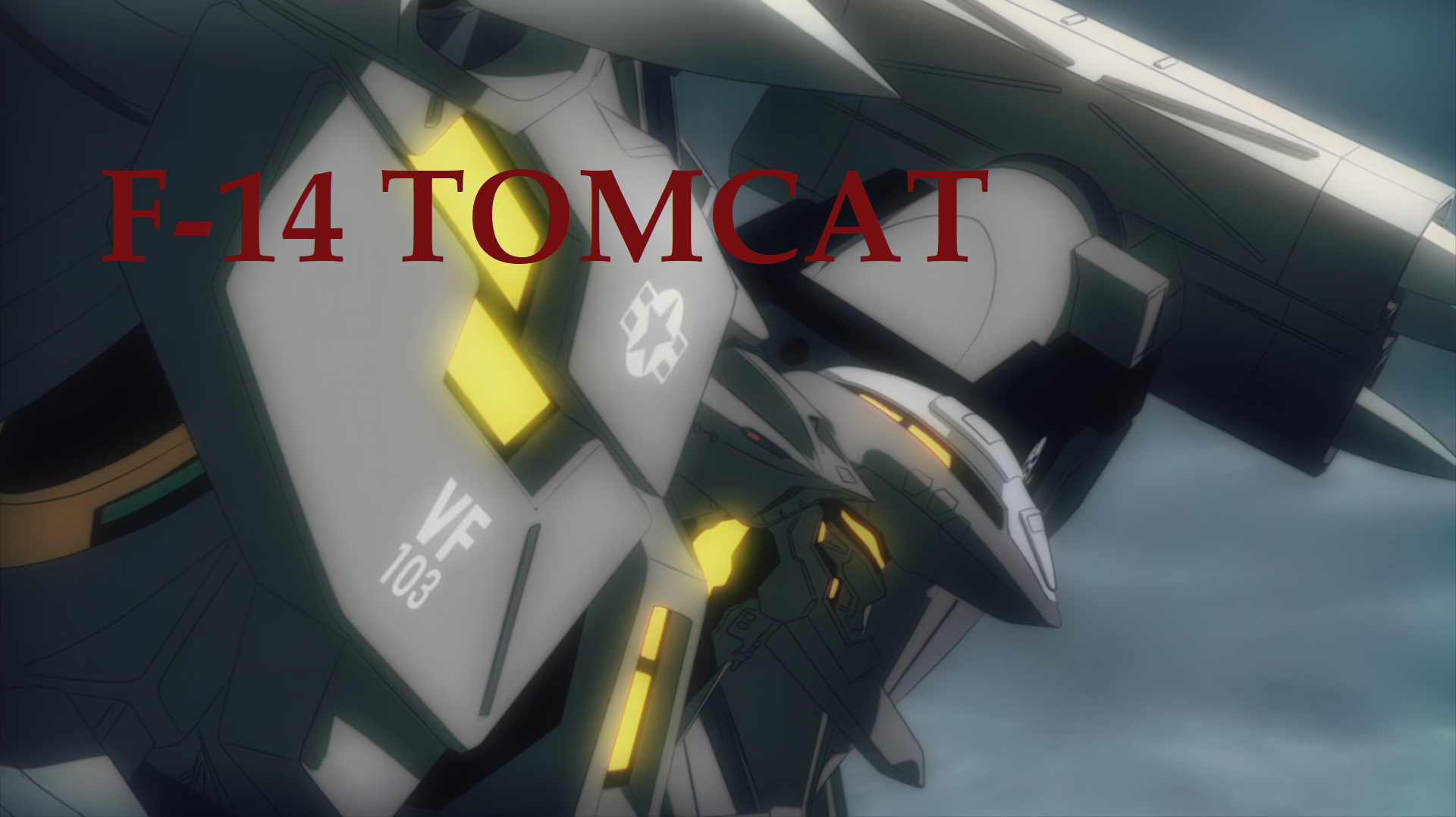
Mecha Profile: F-14 Tomcat – Muv-Luv Alternative
One of the most iconic go-to jets to incorporate into a mecha series, the F-14 Tomcat also found its place in the Muv-Luv BETAverse. As the first 2nd-Generation TSF in the world, the Tomcat is an ambitious unit that aim to deliver America’s “freedom” to the BETA.
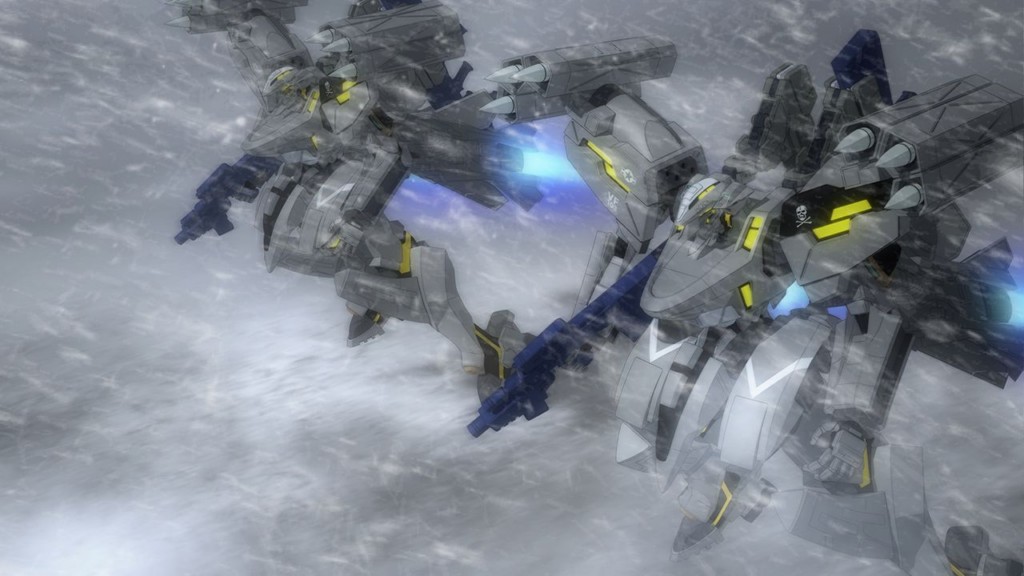
I. Development History:
– During the BETA war, the US Navy had analyzed anti-BETA combat data in Eurasia and submitted its findings to the US government. The government proceeded to change all Nimitz-class nuclear aircraft carrier to full-scale TSF carrier, as well as ordered TSF manufacturer Grunnan to develop a craft to succeed the F-11 Tiger (which is the world’s first carrier-used TSF). As Grunnan lost to McDaell with its F-4 Phantom design prior, they were eager to produce a craft that would win over its competitor.
– Grunnan used all the resources they had, as well as making use of the accumulated combat experience from the BETA war and the feedback of the F-4 Phantom to develop the next TSF. Half a year later, new blueprints and specifications of the F-14 was submitted to the Navy and were met with enthusiastic responses. As the F-14 was able to meet the Navy’s required specs and actively adopted new innovative technologies, the Navy placed an exceptional advance order of 100 units, even when it was still in the design phase.
– With ample funding backing them, The F-14’s development was smooth sailing. In November 1981, the first mass-production F-14 Tomcat was handed to the Navy. The unit is an ambitious TSF design with medium to close range area control combat in mind. It also adopted the new, dedicated support missile – the AIM-54 Phoenix. Admiral Lascaux Helen Carter of the Navy heralded the F-14 as “rendering all other TSFs obsolete overnight”.
– In 1987, the Tomcat was also marketed to the Empire of Japan, but due to its low close-quarter combat abilities, Japan preferred the F-15 Eagle over the F-14. Overtime, it received many refurbishments that brought the performance to quasi-3rd-generation level, making it a 2.5-generation craft. However, as of 2001, the F-14 Tomcat has begun to be brought into retirement ahead of schedule, due to the rise in maintenance cost. Even though its upgrade – the F-14Ex Super Tomcat – was a superior TSF, they were still replaced by the F-18 Hornets.
– During the BETA war, the US Navy had analyzed anti-BETA combat data in Eurasia and submitted its findings to the US government. The government proceeded to change all Nimitz-class nuclear aircraft carrier to full-scale TSF carrier, as well as ordered TSF manufacturer Grunnan to develop a craft to succeed the F-11 Tiger (which is the world’s first carrier-used TSF). As Grunnan lost to McDaell with its F-4 Phantom design prior, they were eager to produce a craft that would win over its competitor.
– Grunnan used all the resources they had, as well as making use of the accumulated combat experience from the BETA war and the feedback of the F-4 Phantom to develop the next TSF. Half a year later, new blueprints and specifications of the F-14 was submitted to the Navy and were met with enthusiastic responses. As the F-14 was able to meet the Navy’s required specs and actively adopted new innovative technologies, the Navy placed an exceptional advance order of 100 units, even when it was still in the design phase.
– With ample funding backing them, The F-14’s development was smooth sailing. In November 1981, the first mass-production F-14 Tomcat was handed to the Navy. The unit is an ambitious TSF design with medium to close range area control combat in mind. It also adopted the new, dedicated support missile – the AIM-54 Phoenix. Admiral Lascaux Helen Carter of the Navy heralded the F-14 as “rendering all other TSFs obsolete overnight”.
– In 1987, the Tomcat was also marketed to the Empire of Japan, but due to its low close-quarter combat abilities, Japan preferred the F-15 Eagle over the F-14. Overtime, it received many refurbishments that brought the performance to quasi-3rd-generation level, making it a 2.5-generation craft. However, as of 2001, the F-14 Tomcat has begun to be brought into retirement ahead of schedule, due to the rise in maintenance cost. Even though its upgrade – the F-14Ex Super Tomcat – was a superior TSF, they were still replaced by the F-18 Hornets.

II. Technical Specs & Armaments:
– The F-14 Tomcat stands at 19.3-meter tall, utilizing 2 FE110-GE-400 Jump Units manufactured by Northrock. The F-14 has a larger frame compared to other TSF in order to carry more fuel and armaments to prolong operation time and cruising range. The Tomcat also adopted a multi-seat control unit, capable of letting 2 pilot into the cockpit at a time. Even though the frame is larger, there is a significant improvements in mobility and manoeuvrability by exchanging heavy armor for lightweight composite armor as well as the adoption of OBW (Operation By Wire).
– The F-14 is a relatively large unit, therefore there is a lot of free design space for modifications. The Jump Unit also adopt a variable wing structure to enhance aerodynamic control. After many successful refurbishments, the F-14D has the same overall capabilities as the F-15C Eagle. Later on, the F-14Ex Super Tomcat adopt the new support shoulder thruster unit as well as additional super-carbon blade vanes. This is a testament to the upgradability of the F-14’s design. There was also a version with enhance sensors and electronics equipment used for reconnaissance.
– An exclusive weapon of the F-14 Tomcat is the AIM-54 Phoenix Missile. It is a large, long-range guided missile system to perform area suppressive attacks from outside the range of Laser-class. The cruise missile follow the contour of the terrain using automated guidance by GPS, making it easy to fire-and-forget. The payload carries a cluster explosives that disperse above the target area. Three missiles can be mounted on each shoulder block of the F-14, so a single squadron can inflict significant damage to a brigade-scale BETA group. However, due to high procurement cost, the AIM-54 Phoenix was phased out after the F-14 was retired by the U.S. However, licensed productions for Soviet TSF are still being used.
– The F-14 should use standard equipment of their respective army. For the US, it’s the WS-16 Assault Cannon and later on the AMWS-21 Combat System, though the chances of the Tomcat using the AMWS-21 is much lower since it only got deployed in 2000.
III. Variation:
Since its initial deployment, the F-14 Tomcat has received many refurbishments, including a special recon variant that was used in operations around the world.
– F-14 Tomcat: The original version of the TSF. The first 2nd-generation TSF.
– F-14D Tomcat: The result of various refurbishments by Grunnan. This version has the same combat capabilities as the F-15C Eagle.
– F-14E Tomcat: An even further enhanced F-14D. This model is currently used by the Navy’s 103rd TSF Squadron Jolly Rogers.
– F-14AN3 Mindseeker: a special variant of the F-14D. The Alternative III Committee has chosen the F-14D over the Mig-31 Plamya-Lisa as the special recon unit. The Mindseeker has 1 pilot and 1 ESPer seat onboard, with special composite sensors and special recon equipment on its shoulder blocks instead of the AIM-54, as well as on its forearms and head unit. The unit has significantly less firepower and less mobility, in tradeoff for the Alternative Plan objective.
– F-14Ex Super Tomcat: a quasi-3rd generation TSF developed by Northrock Grunnan in collaboration with the Iranian Army. The unit is the result of the “Super Tomcat Program” proposed by Northrock Grunnan to the Navy. Although not chosen as the Navy’s next mainline (the F-18E/F Super Hornet was chosen instead), the F-14Ex Super Tomcat is a strong TSF with even greater close quarter combat capabilities than the F-14 thanks to extra shoulder thrusters and super carbon blade vanes.
– F-14D Tomcat: The result of various refurbishments by Grunnan. This version has the same combat capabilities as the F-15C Eagle.
– F-14E Tomcat: An even further enhanced F-14D. This model is currently used by the Navy’s 103rd TSF Squadron Jolly Rogers.
– F-14AN3 Mindseeker: a special variant of the F-14D. The Alternative III Committee has chosen the F-14D over the Mig-31 Plamya-Lisa as the special recon unit. The Mindseeker has 1 pilot and 1 ESPer seat onboard, with special composite sensors and special recon equipment on its shoulder blocks instead of the AIM-54, as well as on its forearms and head unit. The unit has significantly less firepower and less mobility, in tradeoff for the Alternative Plan objective.
– F-14Ex Super Tomcat: a quasi-3rd generation TSF developed by Northrock Grunnan in collaboration with the Iranian Army. The unit is the result of the “Super Tomcat Program” proposed by Northrock Grunnan to the Navy. Although not chosen as the Navy’s next mainline (the F-18E/F Super Hornet was chosen instead), the F-14Ex Super Tomcat is a strong TSF with even greater close quarter combat capabilities than the F-14 thanks to extra shoulder thrusters and super carbon blade vanes.
IV. Gallery:
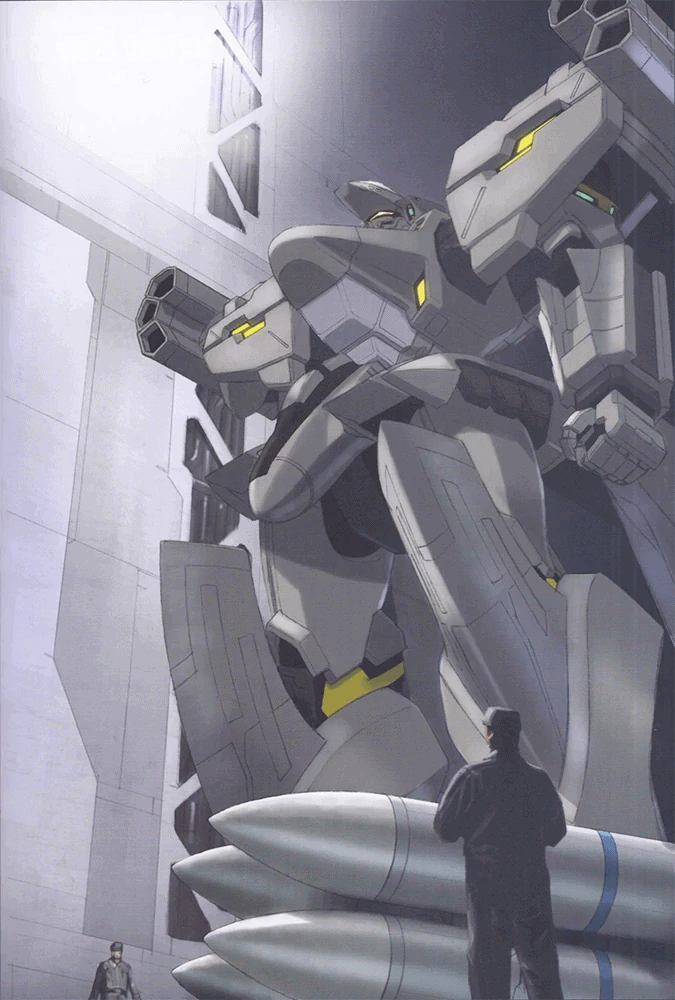
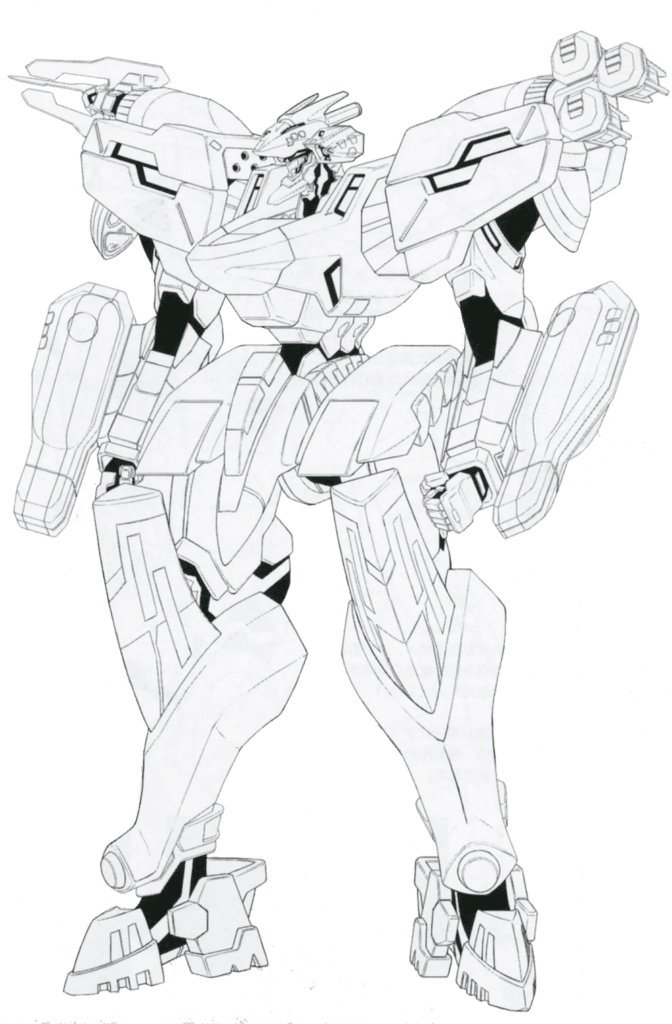
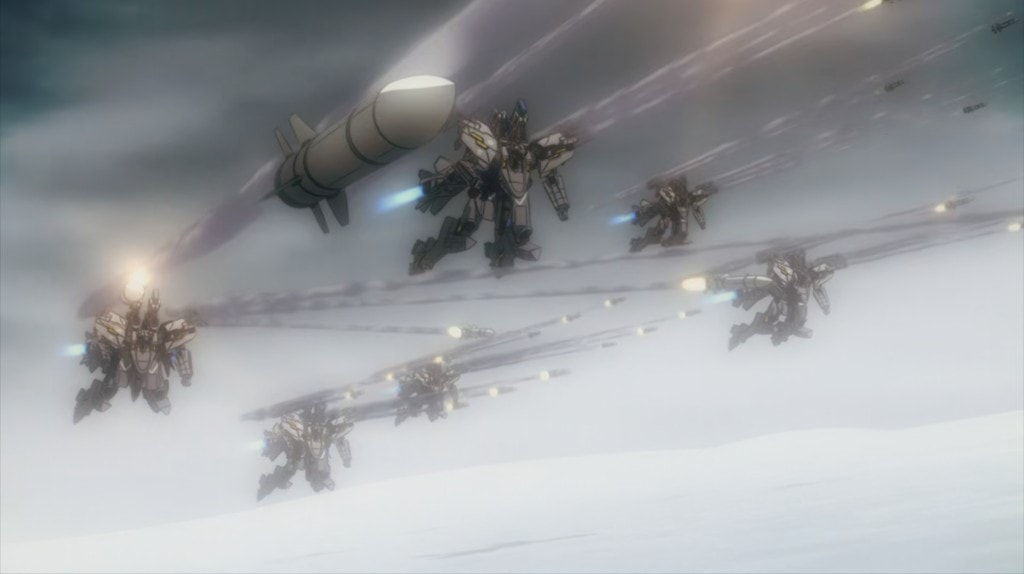
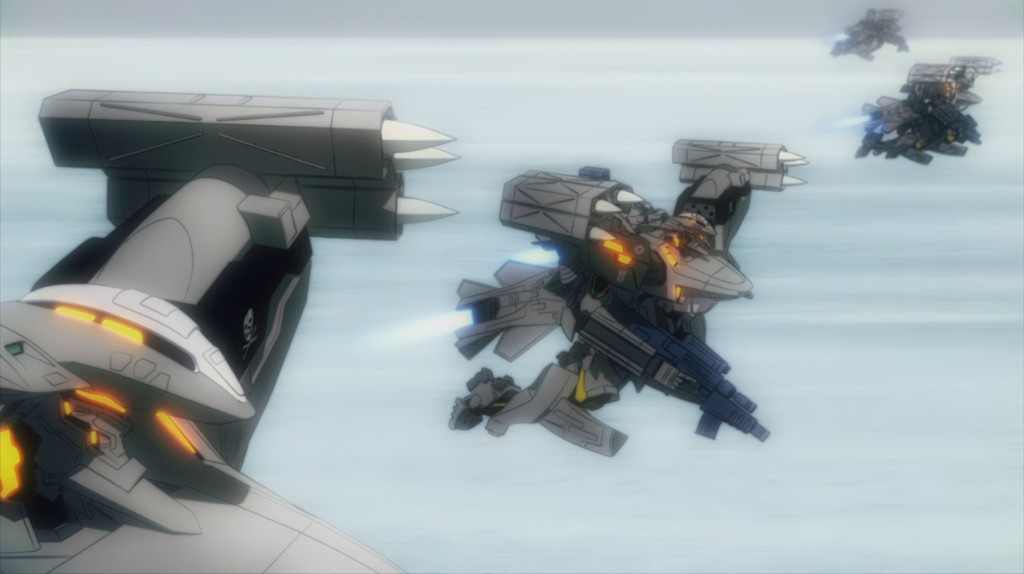


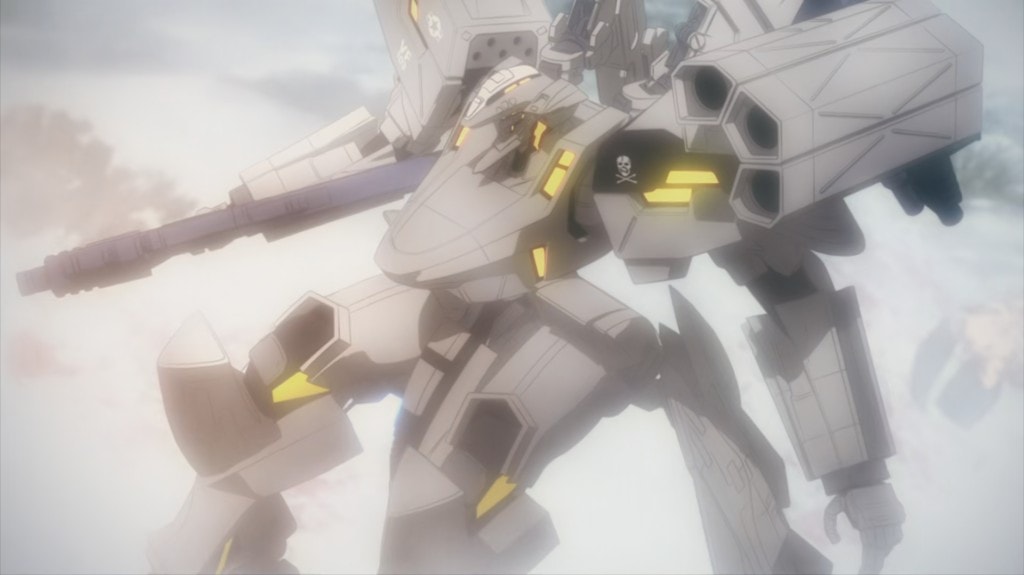

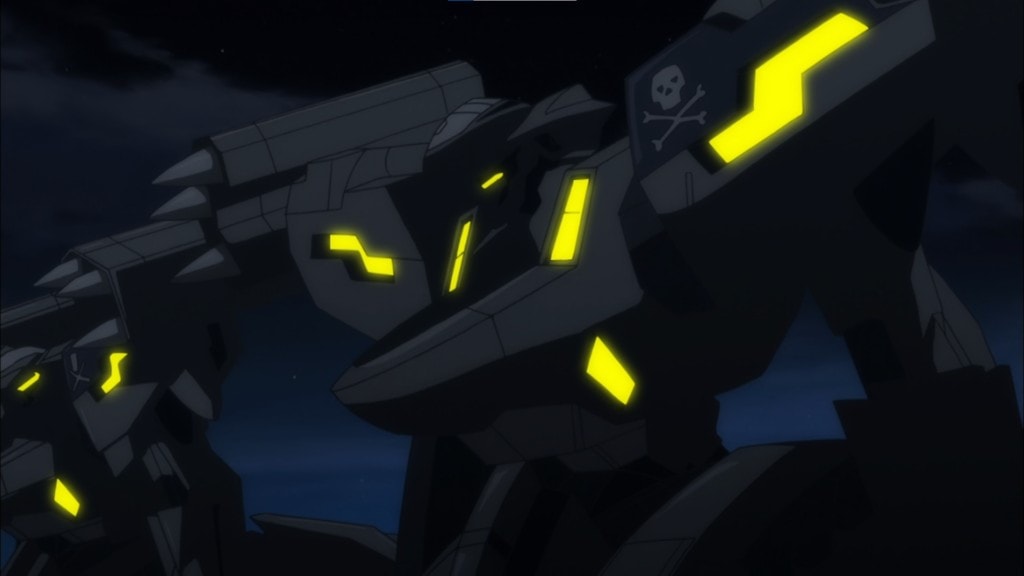

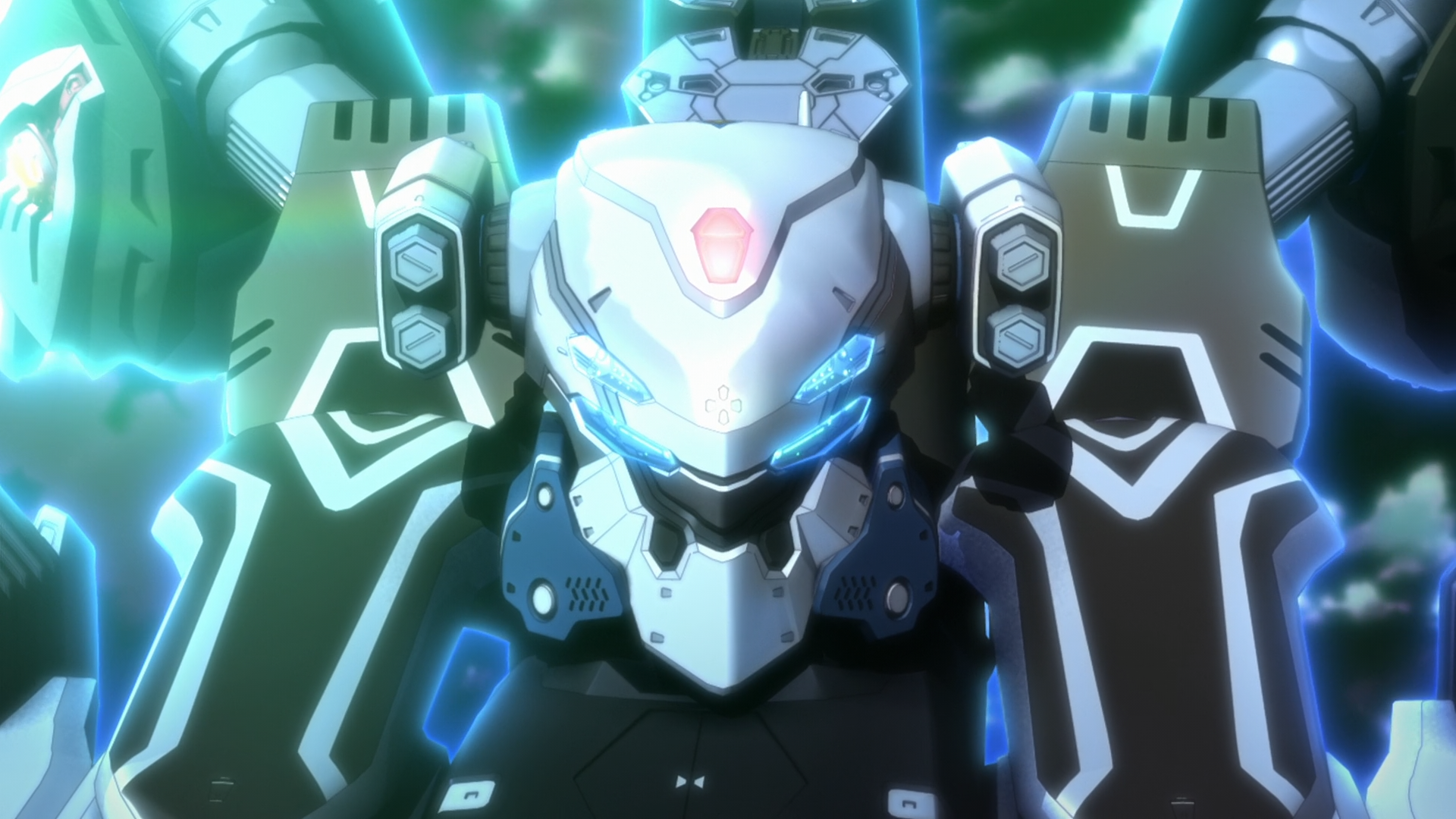
Mecha Profile: Aquarion Gepard – Aquarion EVOL
The 3rd form of the Aquarion EVOL is a walking artillery of destruction – literally. The Aquarion Gepard has enough firepower to even shoot through dimensions.

Mecha Profile: Aquarion Spada- Aquarion EVOL
The unbeatable melody of the sword – Aquarion Spada is Evol’s 2nd form. With a strong resemblance to a swordsman, the Spada is a key element in unlocking the myths of 12,000 years.

Mecha Profile: Aquarion EVOL – Aquarion EVOL
After 12.000 years, the Mechanical Angel awakens once again. Fighting for the love that span millennia, the Aquarion EVOL once again unlocks the past that was sealed within.
